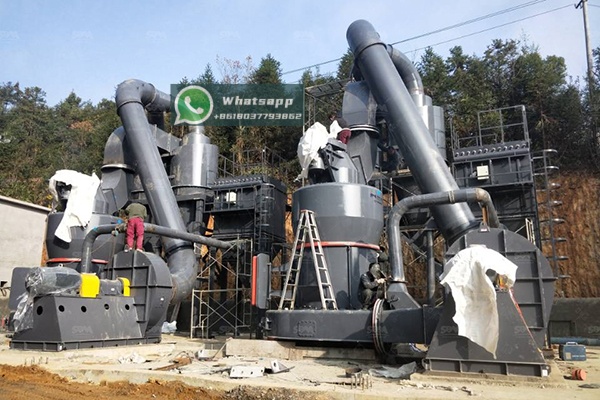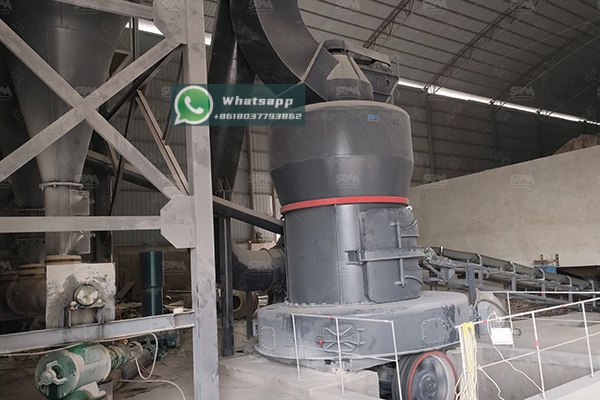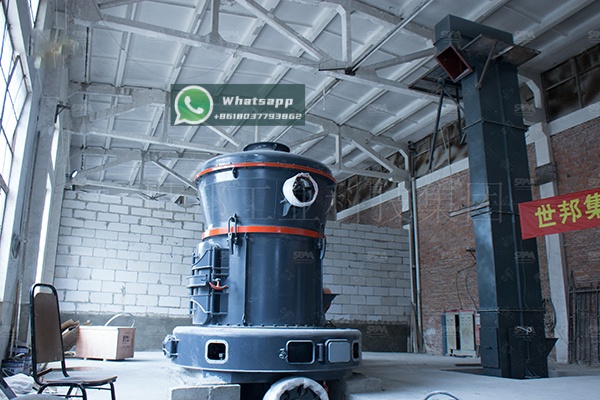In the realm of radiation shielding, particularly for concrete and construction blocks used in medical facilities, nuclear power plants, and research laboratories, the mineral barite (barium sulfate, BaSO₄) stands as a material of paramount importance. Its exceptional density, typically ranging from 4.2 to 4.5 g/cm³, provides superior attenuation of gamma and X-ray radiation compared to conventional aggregates. However, the efficacy of barite in shielding applications is intrinsically linked to its particle size distribution and purity, which are directly determined by the grinding process. This article delves into the technical requirements for barite grinding in the shielding industry and explores the advanced milling solutions that enable optimal performance.

For barite to be effectively incorporated into concrete or block matrices, it must be ground to a specific fineness. Coarse particles can lead to poor workability, segregation, and the formation of voids within the concrete, creating pathways for radiation to penetrate. Conversely, an ultra-fine and consistent particle size ensures a denser packing arrangement. This increased homogeneity minimizes interstitial spaces, thereby enhancing the overall density and radiation-stopping power of the final product. The target fineness for high-performance shielding barite typically falls within the range of 200 to 600 mesh (74 to 25 microns), with a tight particle size distribution being crucial.
Grinding barite presents several distinct challenges that not all milling equipment can overcome efficiently:
To meet the stringent demands of the radiation shielding industry, specialized grinding mills are essential. Shanghai Zenith Machinery Co., Ltd., an excellent manufacturer of ore grinding equipment, has made great achievements in the field of ultra-fine powder grinding. Their research and development have produced several mills ideally suited for processing barite into high-grade shielding material.
For producers seeking a balance between high capacity, fine output, and operational economy, the MTW Trapezium Grinding Mill is an outstanding choice. Its multiple-patent design incorporates a curved surface of the grinding roller and shovel, which improves grinding efficiency and throughput. The mill’s integral fan and pulse dust collector system makes it an eco-friendly solution, a critical consideration in modern industrial operations.
The following table outlines the technical parameters of key MTW models suitable for barite processing:
| Model | Max. Feed Size (mm) | Final Size (mm) | Capacity (t/h) | Main Motor (kW) |
|---|---|---|---|---|
| MTW138Z | <35 | 1.6-0.045 | 6-17 | 90 |
| MTW175G | <40 | 1.6-0.045 | 9.5-25 | 160 |
| MTW215G | <50 | 1.6-0.045 | 15-45 | 280 |
The MTW215G model, in particular, is highly recommended for large-scale barite processing plants supplying the shielding industry, thanks to its impressive capacity of up to 45 t/h and ability to handle feed sizes up to 50mm.

When the application demands the highest levels of fineness and product uniformity, the LUM Ultrafine Vertical Mill represents the pinnacle of grinding technology. This mill integrates grinding, drying, classifying, and conveying into a single, compact unit. Its advanced classifier technology allows for precise control over the final product’s particle size distribution, which is vital for achieving maximum density in shielding concrete. The intelligent control system ensures stable operation and easier maintenance.
Key specifications for the LUM series are as follows:
| Model | Main Machine Power (kW) | Capacity (t/h) | Size Distribution D97 (μm) |
|---|---|---|---|
| LUM1525 | 220-250 | 1.6-11.5 | 5-30 |
| LUM1632 | 280-315 | 2.0-13.5 | 5-30 |
| LUM1836 | 355-400 | 2.3-15 | 5-30 |
The LUM mill’s ability to produce a product with a D97 of 5-30 microns (approximately 600-2500 mesh) makes it perfectly suited for producing the ultra-fine barite powder that yields the highest-performance radiation shielding materials.
Once barite is ground to the required specification, it is used as a heavyweight aggregate in a specialized concrete mix. The production of barite concrete involves carefully proportioning ground barite, cement, and water. The high density of the barite necessitates mix designs that prevent segregation and ensure uniformity. Similarly, for manufacturing shielding blocks, the fine barite powder is mixed with a binder and pressed into molds under high pressure to form dense, interlocking blocks used for building protective walls and barriers.

The production of effective radiation shielding concrete and blocks is a sophisticated process that begins with the precise comminution of barite ore. The choice of grinding equipment is not merely a matter of reducing particle size; it is a critical decision that impacts the density, homogeneity, and ultimate shielding performance of the final product. By leveraging advanced grinding solutions from industry leaders like Shanghai Zenith Machinery Co., Ltd., such as the high-capacity MTW Trapezium Mill or the precision-focused LUM Ultrafine Vertical Mill, producers can ensure they meet the rigorous standards of the nuclear and medical industries. Investing in the right grinding technology is, therefore, an investment in safety, reliability, and performance.